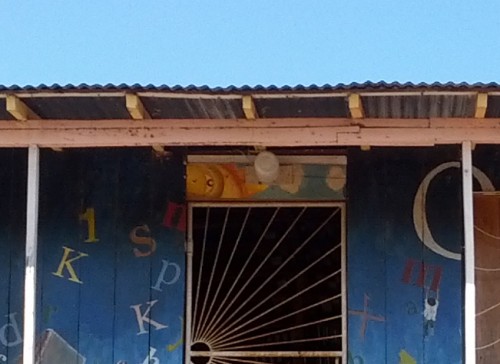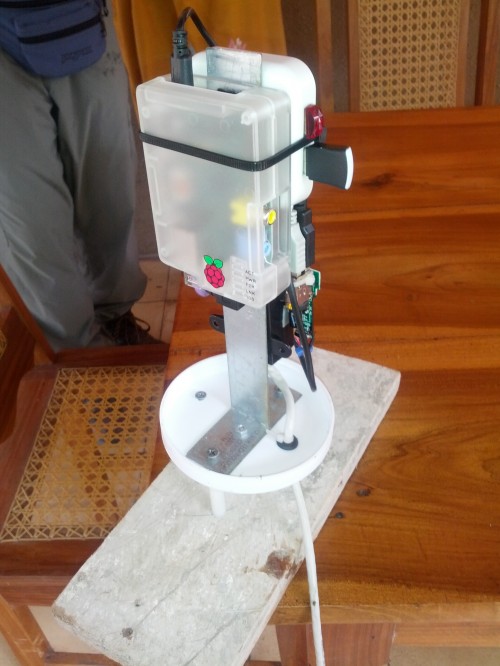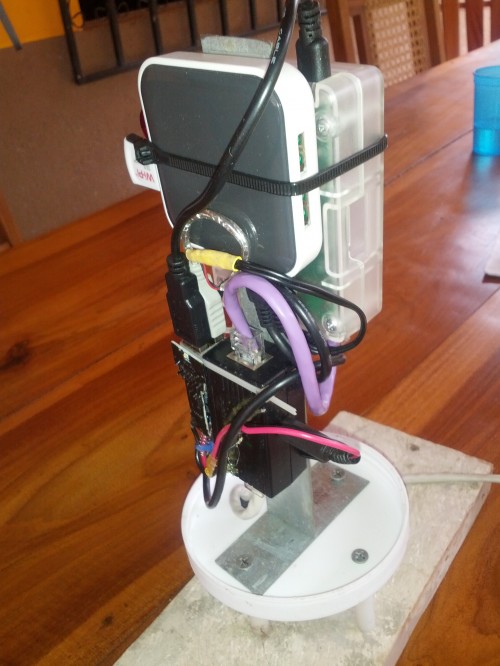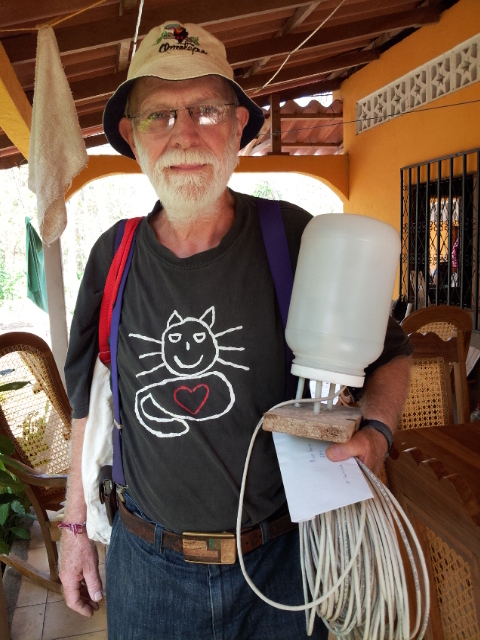|
Some people think there are only four seasons, but they are forgetting about the most significant (and exciting) one… hockey season! Many of us have been watching pre-season games and statistics with interest, and as a life-long Edmonton Oilers fan, I would add a touch of eternal optimism. As a die hard hockey fan, I can assure you that there is no better companion than the NHL GameCenter app –and fortunately for all of us, it’s updated and ready for opening day! There are many sports-themed apps out there, but when it comes to the NHL, there aren’t any that offer the range of features seen here. Enjoy live scores and stats for every team and every player, live game simulations with near real-time shift changes, post-game video highlights, full season schedule and standings, customized game alerts, player profiles (complete with headshots, bios and stats), and the ability to identify your top five favourite teams (or if you are like me, your favourite team and those of your friends that you need to keep a close eye on). If you have invested (wisely) in an NHL GameCenter Live subscription, this app also delivers live streaming content of games on the fly (with multiple camera angles)… with a sidebar that keeps hardcore fans up to date on other games being played at the same time! If you like hockey even a little bit (and even if you don’t, because you should really give the sport another chance), download NHL GameCenter immediately… and get yourself ready to watch the Oilers make a solid run for the Stanley Cup.
Hockey Season Begins with Updated NHL GameCenter App is a post from: Good e-Reader |
A Semi-automated Technology Roundup Provided by Linebaugh Public Library IT Staff | techblog.linebaugh.org
Monday, October 6, 2014
Hockey Season Begins with Updated NHL GameCenter App
Keep Score During Your Next Game With Rounds
|
I’ve been playing around in this mobile world since the beginning, so for an app to impress me… it has to soothe a pain point (ideally, one that I didn’t even know I had). Rounds is the latest app to surprise me in this way: brilliantly providing an elegant way to keep score for any game you might be playing. It may not have the same old-school charm as your drawer full of paper scraps filled with scribbles detailing famous Scrabble victories, but it’s delightfully simple (and doesn’t require anybody to do on-the-fly math). To use Rounds, add a game, add players, and add a score (using the handy little disc to add or subtract values). Need to add a player later? No problem. Want to boast about your remarkable victory once the game is complete? Share your results across social media options galore! It’s true you could use any notes app on your tablet or smartphone to do the same thing, but those apps won’t sort players by score (in ascending or descending order, because in some games the lowest score leads the pack). Want to be able to brag about past games? Hang on to past score cards. Want to rematch with the same group of players? Tap ‘Rematch’ beside any game as a shortcut. The free version of the app really isn’t at all limited, other than you can only colour code players using red, blue, and green. If you want to unlock the complete palette of colour options, a mere $0.99 will deliver a rainbow of options. Grab Rounds – score pad and keep it in your mobile back-pocket for the next time you are playing any kind of game that requires you to keep score.
Keep Score During Your Next Game With Rounds is a post from: Good e-Reader |
URL: http://goodereader.com/blog/spotlight-on-android/keep-score-during-your-next-game-with-rounds
MMS Support Added to Google Voice
|
A lack of multimedia message service (MMS) support has plagued Google Voice since it began, particularly these days when being able to share photos and videos with your contacts is considered a basic messaging feature. Being able to send a simple, 160-character, text-only, SMS message isn’t enough anymore; fortunately Google has now added support for MMS. Google employee Alex Wiesen, shared news of the update:
What is apparent in Wiesen’s comment is the lack of universal carrier support –with a few noticeable absences (Verizon Wireless, anybody?). Not to fear, though… Google appears ready, willing, and able to work with any carriers that would like to add support for MMS. Early reviews of the service indicate that it is a little glitchy, but that isn’t unusual with a first release. If you would like to give it a try for yourself, download Google Voice now.
MMS Support Added to Google Voice is a post from: Good e-Reader |
URL: http://goodereader.com/blog/spotlight-on-android/mms-support-added-to-google-voice
App Markets May be the Savior of e-Readers
|
The trend away from dedicated e-readers stems, in part, from their more-limited capabilities, which often include greyscale screens that make for great battery life, but lack compared to tablets. They also have rudimentary Web surfing, due to the refresh issues with e-Ink. Tablet computers, such as Apple iPad, Amazon’s Kindle Fire and other devices using the Android operating system, have color displays, full Web browsing. The price gap for many tablets has also narrowed, making them even more attractive to consumers. Google, for instance, sells a version of its Nexus 7 tablet for just $299, and Amazon now offers a $159 model of its Fire device, which is $20 less than the most expensive Kindle e-reader and $40 more than the priciest Nook.The iPad Mini recently brought the entry price of Apple tablets to $329, down from $499 at the original iPad size. The new Kindle Voyage is $199, which makes it around the same price as a solid mid-range tablet. The main problems with e-readers is that they were designed for one thing, reading books. Sometimes companies like Amazon would issue an SDK for developers to make Kindle Games. In other cases companies like Kobo would sign an agreement with Pocket, to bring a custom read it later app over. What about alternative reading apps, or social media networks? Sadly, none of the large reader companies have made any moves. Europe is a different story when it comes to the evolution of e-reader software. Companies such as Icarus and Onyx have released a series of dedicated e-ink readers that run a modern version of Android. This allows customers to not be locked into dealing with a specific ecosystem, but the freedom to deal with who they want. This has fueled a mini boom period with hardcore digital readers, who have seen this trend and become enamored with the ideal that they can install any Android app they want. Most have upgraded their e-reader for the first time in years, to make the move. Being able to craft your own e-reading experience on a 6 and 9.7 inch e-reader with the option to install whatever e-Reading, manga magazine, comic or read it later app is strangely compelling. After having a full open version of Android, why don’t companies like Amazon, Kobo, Nook or Sony Japan develop a mini app market? A very small curated app market with apps that don’t compete with your core business would be the right move for the big 4. It could give customers the ability to borrow eBooks from the library via Overdrive, 3M or Axis 360. There are thousands of apps out there such as Twitter, Facebook, or Snapchat that would be really suitable for e-ink. e-Reader owners are notorious for hardly ever upgrading their hardware. There simply aren’t huge leaps in innovation to give you a reason to spend a few hundred dollars for the latest and greatest. The ability to access a small app store might BE the reason to upgrade. Amazon and Barnes and Noble already own their own app market, so porting over the best apps that work on e-ink would be simple. Amazon doesn’t even have a SD card, so they could likely lock it down to prevent sideloading. The future of e-readers is not a tool for nobility, to carry thousands of books in your pocket, while the masses play Angry Birds on their tablets. The future is freedom, the future is Android, the future is apps. App Markets May be the Savior of e-Readers is a post from: Good e-Reader |
URL: http://goodereader.com/blog/commentary/app-markets-may-be-the-savior-of-e-readers
Disney Pulls the Plug on Two Star Wars Themed Mobile Games
|
Without a word of warning to players or the developer Nimblebit, Star Wars: Tiny Death Star and Star Wars Assault Team were recently pulled by Disney from the Google Play Store as well as the Apple App Store. Both titles were under a year old, with Tiny Death Star reaching us last November and Assault Team launching in March. Whether the games will be missed or not isn’t exactly the issue –the real problem is how poorly it was handled. In an email conversation with GameSpot, NimbleBit co-founder Ian Marsh noted that their first indication that the games had been removed was a tweet directed their way asking why they could no longer be found. If you already had the games installed, you are in luck as they are still playable –but how long they can be supported is a mystery. Not only are the developers losing a revenue stream, there is also a feeling that their reputation is now tarnished by Disney’s decision. A little research suggests that the reason for the removals may be due to a focus on newer Star Wars-themed mobile games (like Star Wars: Commander for Android or the soon to be released Star Wars: Galactic Defense), but no definitive answer has been given.
Disney Pulls the Plug on Two Star Wars Themed Mobile Games is a post from: Good e-Reader |
Amazon Kindle Fire to come with Free Washington Post App
|
Jeff Bezos is the proud owner of the Washington Post and he is hoping to build some synergy between the newspaper and the Kindle. Within a few weeks a special version of the Post will be loaded on the new Kindle Fire line of tablets. it will offer a curated selection of news and photographs from the daily newspaper in a magazine style format. According to Business Week the project has been dubbed Project Rainbow and is being led by Kerry Lauerman, the former editor-in-chief of Salon.com. Lauerman joined the paper as a senior editor in July to work on "an initiative focused on the fast-growing mobile readership," according to a Post press release announcing the hire. Lauerman reports to Cory Haik, the Post's executive producer for digital news. Once the new Post app drops on the new line of Kindle tablets, it will also be available to read on the new $79 Kindle and Kindle Voyage. The app will also be ported over to Android and iOS, but users will have to pay a monthly subscription fee to access the content. Kindle owners of course, will get it all for free. Will a free news app from the Washington Post be enough to convince people to buy the new Kindle Fire tablet? Likely not, the vast majority of newshounds do not pay for news anymore. Amazon Kindle Fire to come with Free Washington Post App is a post from: Good e-Reader |
Fire HD vs Fire HDX Comparison Review – Kindle Tablets Compared (+Video)
| I’ve been testing the new Fire HD 6 extensively since it got released last week, and I wanted to do a comparison review between it and the 7-inch Kindle Fire HDX, mainly to show the difference in size between a 6-inch and 7-inch tablet. Most companies have settled on offering 7-inch tablets for the smaller […] |
URL: http://feeds.the-ebook-reader.com/~r/feedburner/cmWU/~3/6m1eHMtJZ8A/
Fantastic Four Comic Series Cancelled Due to Squabble with FOX
|
The Fantastic Four is known as the First Family in comic book circles. The Fantastic Four was the first superhero team created by writer-editor Stan Lee and artist/co-plotter Jack Kirby back in 1961. FF4 has been experiencing dragging sales in the last few years, despite attempts to reboot the series. We now have it on good authority that the series is coming to an end in June 2015. Disney and FOX has been going head to head in the Marvel cinematic universe for quite awhile. FOX has the movie rights to X-Men, Deadpool and the word “mutants”, which is why your will never hear this uttered in any of the films Disney creates. FOX also has rights to the Fantastic Four and will be releasing a reboot of the series in mid 2015, and Marvel does not want to promote it at all. This has prompted the comic book company to suspend production of the Fantastic Four comic for over a year. The destruction of the Fantastic Four to not promote the upcoming Fox movie is reverberating across the industry. Diamond Select Toys were told by Disney that they can’t make any new toys if they feature Mr Fantastic, the Invisible Women, Thing, the Human Torch, Doctor Doom, Galactus, Silver Surfer, the Watcher or Skrulls. When it comes to bookstore distribution, this is primarily handled by Hachette. They only handle graphic novels now and abandoned single issue distribution in 2013. The last graphic novel will come out in June and is entitled Fantastic Four: The End Is Fourever. “THE END IS FOUREVER! Witness the closing act on the First Family of the Marvel Universe! THE INVADERS meet the FANTASTIC FOUR as the hunt for REED RICHARDS and the missing kids of the FUTURE FOUNDATION continues. Meanwhile the mastermind behind everything unveils his ultimate plan. But how does FRANKLIN RICHARDS factor in? And how does this all lead to…The END?! Collecting FANTASTIC FOUR #642-644 and the Triple Sized Final Issue 645!” I think its very interesting that Marvel would rather give up one of their oldest ongoing franchises just to stick it to FOX. Likely, we will see no more comics featuring the FF4 to be produced until well after the DVD will be released sometime in 2016. Fantastic Four Comic Series Cancelled Due to Squabble with FOX is a post from: Good e-Reader |
5 easy ways to connect students with your school’s digital library
| Looking for some tips to introduce new students to your digital collection and keep them coming back for more? Here are five simple suggestions on how to engage students and help boost your eBook circulation: 1) Make your eBooks easy to find: Add a link to your digital library from your school intranet, district homepage or student online accounts. You can add a simple text link or hyperlink an image, like one of the many web graphics available in the Partner Portal. Do you have an online library catalog? Sign up for free minimum MARC records to make your digital titles easily discoverable in the catalog. 
2) Create Student ID cards: Do you find students (and teachers) struggling to remember their username or password to access your digital collection? You can help remedy this by creating digital library ID cards for every student and staff member who has access to your site. It's easy to do in Microsoft Office (Excel and Word) and you can download a PDF with step-by-step instructions here, and in the "Best Of" K-12 Marketing Materials zip in the Partner Portal.  3) Integrate eBooks into the classroom: Encourage teachers, especially of literature or language arts, to explore introducing digital titles in the classroom. For example, eBooks can be displayed on an interactive smart board; audiobooks can be played to give teachers a break from reading aloud; and during independent reading times, students can borrow titles to read on their own devices. 4) Send a quick, visual email: A picture is worth a thousand words, the old adage says, and a visual eye-catching email may grab the attention of your student body better than a block of text. Copy this OverDrive Announcement image into the body of an email, add a hyperlink to your OverDrive-powered website, and send to your students and faculty. 5) Tweet, Post and Pin: If your school has a social media presence, share any of the fun social media images from the OverDrive Facebook account and make sure to add a caption that includes your eBook collection URL. Many of the social media graphics are also saved for quick access in the Partner Portal. You can also share samples of titles with Readbox on your school homepage, blog, or social accounts. These embedded samples can showcase your digital titles in a new way and inspire students to check out the book to keep reading! Need help or have questions? Contact your Account Specialist. Remember that you can always find your OverDrive team contact information in Marketplace, under the Support tab.
Melissa Marin is a Marketing Specialist at OverDrive |
URL: http://feedproxy.google.com/~r/DigitalDistributionBlogOverdrive/~3/AeCuIDCNzok/
Community, coffee and classrooms in Nicaragua
| Liz: Today’s guest post is from David Mitchell, who emailed me last week about some work he’s been doing in Nicaragua with the Raspberry Pi, both at a community level and in a local business environment. We thought that what he’s doing is a real exemplar of how Raspberry Pi can offer whole communities a let up, both economically and in education. (I have left David’s US spellings of words like “colour” and “centre” in place, mostly to annoy Ben Nuttall.) Thank you very much, David – over to you! My wife Lisa and I are fortunate to divide our time between two beautiful islands. One is Bainbridge Island in the US Pacific Northwest. The other is Isla de Ometepe located in Lake Nicaragua in Central America. Over time we’ve become quite involved with Ometepe’s coffee farmers. There’s a great community center across the road from our house, and I’ve helped out in past years with donated used workplace computers for their adult and children’s classes.
I was on Ometepe on 29/2/12 when I ordered my first two Raspberry Pi computers (Liz: here’s a reminder of what this site looked like on that day), and I’ve been looking for interesting ways to use them on the rural, agricultural island ever since. Last year I came across a small e-book library in Spanish. I talked with the center staff, and we decided to install a wireless library. Computers live a hard life outdoors in the tropics, and in a small rural community in Nicaragua, everybody lives outdoors. Because no one can afford air conditioning, buildings have ample space between tops of walls and ceilings. Insects and spiders of all sizes get inside devices and wreak havoc, so packaging is important. I chose a plastic gallon pickle jar which provided enough space for a Pi, a USB hub, a 12VDC-5VDC converter and a PoE injector. USB storage for the library and a WiFi dongle complete the hardware list. Ethernet cable connects the server to the center’s network switch via a matching PoE injector.
The Raspbian version of the Calibre library program isn’t actively maintained, but it’s stable and the book server is relatively light-weight. Administration via X-windows is tedious but seldom needed. For security the center staff suggested putting the server under the eaves where small curious people would not be tempted to explore the pickle jar with its tiny colored flashing lights. Too dim for a night light, it’s a ghostly reminder that inside are worlds to explore. The digital library hasn’t seen a lot of use beyond the center’s own computers, as smart phones are only just beginning to appear in the community. But the books are waiting and the Pi’s tiny power requirements means the hit on the center’s budget, raised from foreign donors, remains negligible.  Look carefully – the Pi server is in the middle of the picture. As we were installing the library server in early 2014, the director of the center and another friend and I were beginning to plan a coffee roastery. Since 1991 Ometepe’s coffee farmers have sold their coffee to a group called the Bainbridge-Ometepe Sister Islands Association. Recent improvements in farming practices have resulted in more coffee than the group can buy, and an opportunity to provide export-quality coffee to restaurants and hotels in Nicaragua’s growing tourism sector. We’ll use the profits from our business to provide a stable funding source for the center, to help relieve the fundraising pressure. My friends and I are in the midst of a campaign on Indiegogo to raise startup funds. Tostadores de Ometepe will be an all-Pi shop. The roaster controller will run on software developed in Australia by Pi enthusiasts. The PBX that will answer our two incoming lines, one for each local carrier, will run on a Pi with a couple of GSM dongles. A Pi in a pretty PiBow case attached to the back of a low-cost HDMI TV will be the office computer, though we’ll have to be careful to seal up any open jacks lest we find wasp larvae in them. All of these will communicate through a semi-reliable Internet connection to the OwnCloud server in our Bainbridge Island house, running on a Pi of course. All this software has been created by Pi users, scratching their own itch and making the world a bit better for us all. The Raspberry Pi has been a seismic event in the evolution of computing. The budget for IT in our startup is 1.75% of total and 8% of furniture, fixtures and equipment. Even five years ago the hardware would have cost ten times as much and occupied up 20 times as much space. Liz again: If you’re looking at setting up something similar to David’s library project, we wholeheartedly recommend you look at the RACHEL project from World Possible, which just keeps getting better and better. RACHEL offers localised content including textbooks, world literature, medical texts, Khan Academy resources and much more to communities without internet connectivity, using a Raspberry Pi as a local server. |
URL: http://www.raspberrypi.org/community-coffee-and-classrooms-in-nicaragua/



 E-Readers such as the Kindle, Nook and Kobo have all been popular models to read eBooks since 2007. International expansion into hundreds of markets has fueled device sales, but they have been on the wane in the last two years. The main problem with dedicated e-ink readers is they are only good for one thing, reading books. This simple fact has prompted the rise of tablets running Android. How can e-Readers make a comeback?
E-Readers such as the Kindle, Nook and Kobo have all been popular models to read eBooks since 2007. International expansion into hundreds of markets has fueled device sales, but they have been on the wane in the last two years. The main problem with dedicated e-ink readers is they are only good for one thing, reading books. This simple fact has prompted the rise of tablets running Android. How can e-Readers make a comeback?






